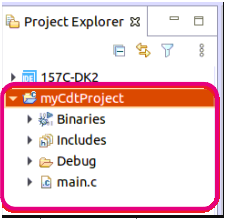This article is a guideline to OP-TEE trusted application support, which is fully integrated from release 1.7.1.21_MP13-A1 of STM32CubeIDE.
It proposes creating one OP-TEE trusted application project to implement:
- user space hello world with call to OP-TEE trusted application
- OP-TEE trusted application itself with UUID support
1. Prerequisites[edit source]
Minimum hardware
- STM32MP135F-DK-based board
- Linux console
- Ethernet (or Ethernet over USB) for connection to Linux® Cortex®-A
Minimum software
- STM32CubeIDE v1.7.1.21_MP13-A1 installed and
- STM32MP15 project created
- Yocto SDK installed thanks to "Setup OpenSTLinux" Cortex-A contextual menu
2. STM32CubeIDE Linux user space[edit source]
From STM32CubeIDE release 1.6.0 it is possible to enrich an STM32MP15x hierarchical project with User Space type project.
- executable project support - myExe
- static library project support - myStaticLib
- shared library project support - mySharedLib
- GTK library usage example - GtkHelloWorld
3. Eclipse CDT STM32 Linux user space[edit source]
From STM32CubeIDE release 1.6.0 it is also possible to easily create a STM32MP15x user space project from standard CDT Eclipse wizard.
In that case, the user space project is not part of any STM32MP15x hierarchical project and appears as a standalone project in Eclipse project explorer view: myCdtProject here after:
- STM32MP15x Linux user space executable from CDT wizard project support - myCdtProject

